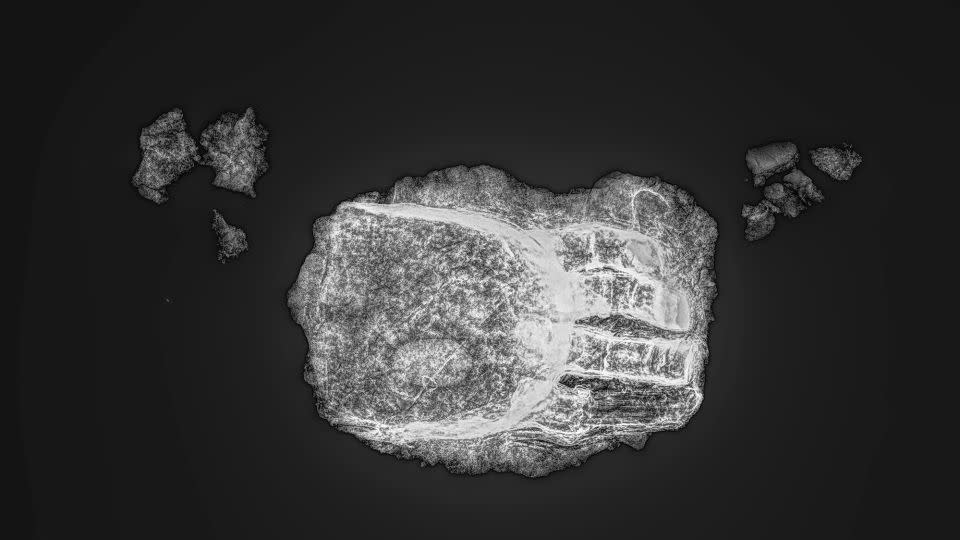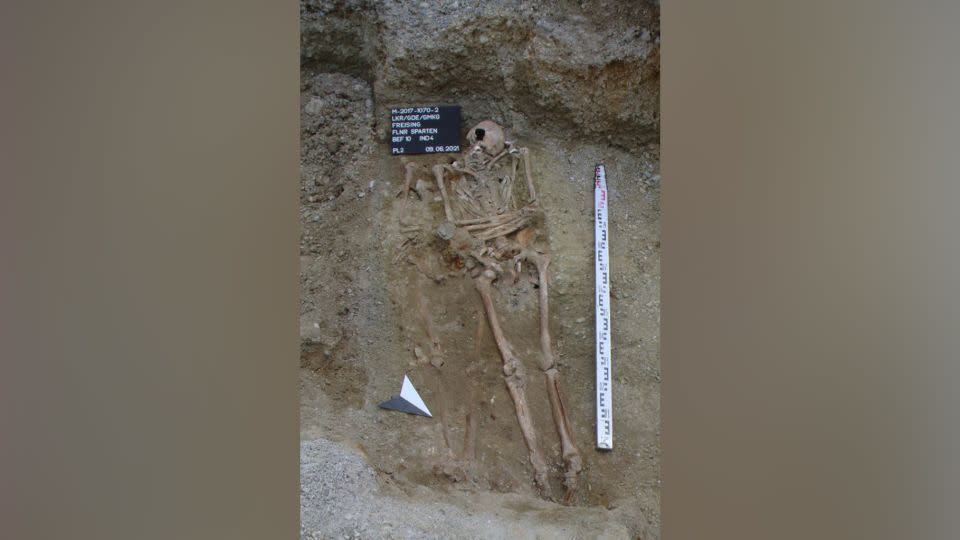Archaeologists in Germany find centuries-old skeleton with prosthetic hand
Archaeologists in Germany have uncovered a centuries-old skeleton complete with a metal prosthetic hand to replace four missing fingers.
The Bavarian State Office for Monument Preservation said in a statement published last week that archaeologists used carbon dating to estimate that the man died some time between 1450 and 1620, aged between 30 and 50 years old. This would make the prosthetic hand potentially almost 600 years old.
The fingers on the man’s left hand appear to have been amputated and the remains of the hand were surrounded in a hollowed-out case wrought from iron and other metal, revealing the advanced state of medicine at the time, archaeologists said.

“The hollow hand prosthesis on the left hand added four fingers,” Walter Irlinger, head of the Bavarian archaeological monument conservation department, said in the statement.
“The index, middle, ring and little fingers are individually formed from sheet metal and are immobile. The finger replicas lie parallel to each other, slightly curved. Presumably the prosthesis was attached to the stump with straps,” he added.
A bandage-like fabric was found inside the prosthetic hand, suggesting that it was used to cushion the stump.
The remains were found in a grave near a church in the Bavarian town of Freising, about 40 kilometers (25 miles) north of Munich, during utility work.

Freising was the site of several battles during the Middle Ages and during the Thirty Years’ War of 1618-1648. This probably increased the number of amputations and consequently led to more prostheses, the statement said.
About 50 similar prostheses dating from the same time period have been uncovered in Central Europe, ranging in complexity from an immobile one like the one found in Friesing to an intricate, moving prosthetic hand famously worn by the knight Götz von Berlichingen after 1530, archaeologists added.
And an even older, 3,000-year-old prosthetic wooden toe was uncovered by archaeologists in Egypt in 1997.
Worn by a priest’s daughter, the toe was made to both enable walking and look aesthetically natural, archaeologists later discovered.
For more CNN news and newsletters create an account at CNN.com

